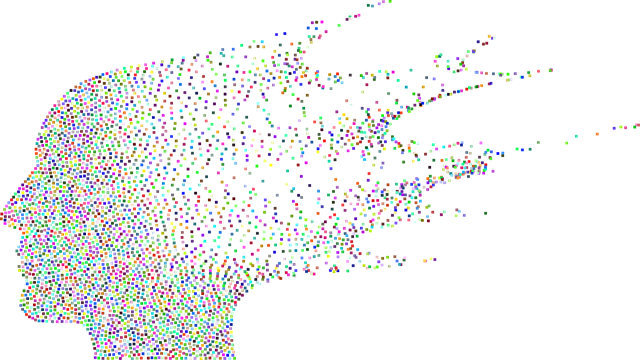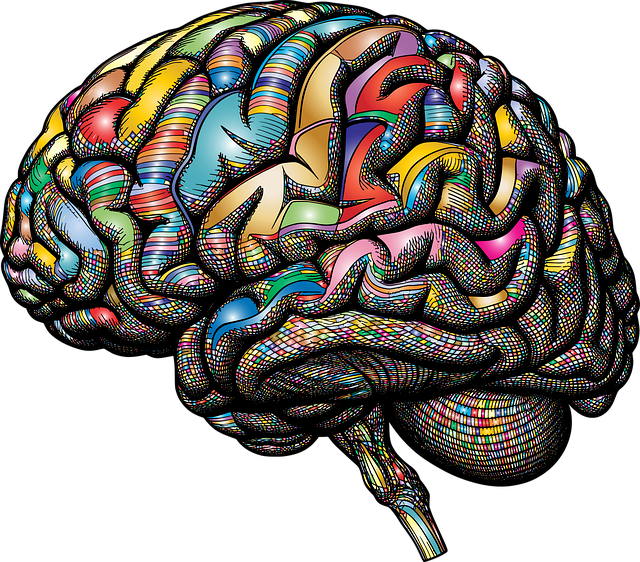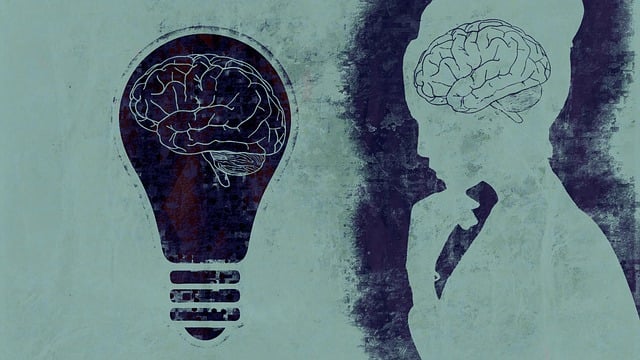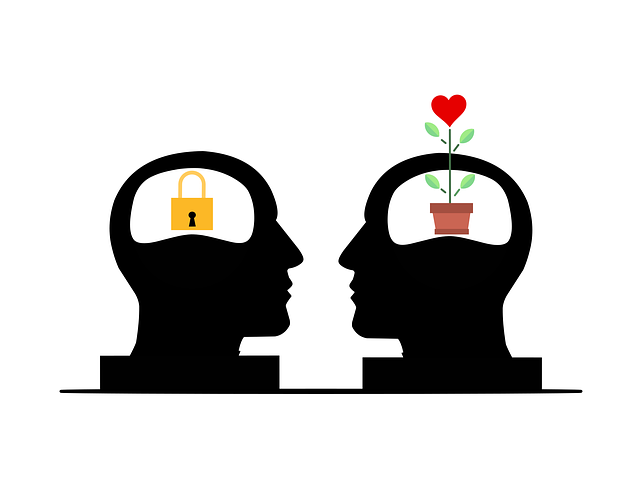The media significantly shapes societal perceptions of mental health, with accurate and positive portrayals reducing stigma and encouraging help-seeking behaviors, while negative depictions can perpetuate misconceptions and marginalization. Responsible media representation, focusing on Mental Illness Stigma Reduction and Burnout Prevention Strategies for Healthcare Providers, is crucial. Children's media often falls short in accurately depicting mental illness, but authentic stories showcasing strength and coping methods can foster compassion and encourage therapy for young audiences, including suicide prevention initiatives. Collaboration between industry professionals and community organizations is key to creating sensitive content that normalizes mental health discussions, challenging stereotypes and promoting access to therapy for vulnerable children. Measuring success through public perception tracking, focus groups, and analytics ensures effective media standards aimed at saving lives by fostering a nuanced understanding of mental illness, building resilience, and normalizing therapy and suicide prevention conversations.
Mental illness representation in media plays a pivotal role in shaping public understanding and perceptions. This article delves into the profound impact of media portrayal on mental health awareness, especially among children. We examine current depictions of mental illness in children’s media, highlighting challenges and gaps. Furthermore, we explore positive strategies for promoting healing and empathy through responsible media representation.
The discussion includes collaboration efforts between industry, professionals, and community groups, ultimately advocating for effective media standards to prevent suicide and foster supportive environments through therapy.
- Understanding the Impact of Media Portrayal on Mental Health Awareness
- The Current State: How Children's Media Depicts Mental Illness
- Positive Representation: Strategies for Promoting Healing and Empathy
- Collaboration Efforts: Industry, Professionals, and Community Working Together
- Measuring Success: Evaluating the Effectiveness of New Media Standards
Understanding the Impact of Media Portrayal on Mental Health Awareness

The media has a profound influence on shaping societal perceptions and attitudes towards mental health issues. The way mental illness is represented in films, television shows, and news coverage can significantly impact public understanding and awareness. Positive and accurate media portrayal can encourage empathy, reduce stigma, and motivate individuals to seek help for their struggles. Conversely, negative or stereotypical depictions may perpetuate existing misconceptions, leading to further marginalization of those living with mental health challenges. This is particularly concerning as media content is often a primary source of information for the general public, especially younger audiences who are impressionable and susceptible to its messages.
For instance, depicting therapy in a positive light can normalize the idea of seeking professional help, promoting a culture of self-care. Similarly, initiatives focused on suicide prevention through awareness campaigns gain momentum when portrayed sensitively and accurately in media. By contrast, sensationalized or exaggerated stories about mental illness can exacerbate existing problems, such as burnout among healthcare providers, by creating unrealistic expectations and potentially discouraging individuals from pursuing treatment. Therefore, it is crucial to advocate for responsible media representation, ensuring that the narratives contribute to Mental Illness Stigma Reduction Efforts and encourage support for both patients and those providing Burnout Prevention Strategies for Healthcare Providers.
The Current State: How Children's Media Depicts Mental Illness

Currently, children’s media often falls short when it comes to accurately depicting mental illness. While there has been some progress in recent years, many portrayals still rely on stereotypes and dramatic license. Common narratives often frame mental health issues as either a fleeting phase or a narrative device for conflict, failing to capture the complexity and chronic nature of conditions like anxiety, depression, or even more severe disorders.
This misrepresentation can have detrimental effects, especially on young viewers who are developing their understanding of the world and themselves. It can contribute to stigma, fear, and a lack of empathy, hindering access to crucial therapy for children struggling with mental health issues. However, by integrating authentic stories that highlight inner strength development, mood management, and stress reduction methods, media has the potential to foster a more compassionate society and encourage help-seeking behaviors in young audiences.
Positive Representation: Strategies for Promoting Healing and Empathy

Media representation plays a pivotal role in shaping public perception about mental illness. Positive portrayals can initiate conversations, foster empathy, and encourage individuals to seek help. When media showcases characters with mental health struggles in a nuanced manner, it promotes understanding and reduces stigma. This strategy is crucial for therapy for children as early intervention is key to building resilience. By presenting relatable characters undergoing treatment and recovery, media can inspire hope and motivate viewers to support those facing similar challenges.
Incorporating mind over matter principles, these positive representations can empower audiences to view mental health issues as manageable. Additionally, diverse cultural sensitivity in mental healthcare practice should be reflected in media to ensure representation that resonates with various communities. Such inclusive storytelling has the potential to save lives by encouraging help-seeking behaviors and enhancing suicide prevention efforts.
Collaboration Efforts: Industry, Professionals, and Community Working Together

In addressing mental illness representation in media, collaboration efforts between industry professionals and community organizations are vital. This unified front leverages diverse expertise to create more accurate and sensitive portrayals of mental health challenges. Media companies can provide platforms for stories that raise awareness and reduce stigma, while professionals like therapists and psychologists offer insights into the nuances of various conditions. Community groups bring on-the-ground perspectives, ensuring representations resonate with real experiences.
Through these collaborative initiatives, the media industry can develop content that promotes emotional regulation and social skills training in young audiences. By showcasing characters navigating depression prevention strategies, for instance, media can inspire viewers to seek help or understand a friend’s struggle. Such efforts not only challenge stereotypes but also foster an environment where discussions about mental health are normalized, leading to improved access to therapy for children facing suicidal ideation or other crises.
Measuring Success: Evaluating the Effectiveness of New Media Standards

Measuring success is a critical component when implementing new media standards aimed at improving mental illness representation. The effectiveness of these initiatives can be evaluated by tracking changes in public perception and understanding of various mental health conditions. This includes assessing how well media portrayals reflect the realities of living with mental illness, promote empathy, and challenge stigma. Surveys, focus groups, and social media analytics can all be employed to gauge shifts in attitudes towards people with mental illnesses, particularly vulnerable populations like children. By comparing public responses before and after the introduction of new standards, researchers can identify successful strategies for therapy representation and suicide prevention.
Furthermore, measuring success involves examining the impact on support systems and help-seeking behaviors. Does an improved media landscape lead to increased access to mental health resources? Do individuals feeling struggling with their mood feel more encouraged to seek professional assistance? These are vital indicators that demonstrate the practical outcomes of stigma reduction efforts. Ultimately, successful media standards should foster a more nuanced understanding of mental illness, encourage resilience building, and ultimately save lives by normalizing conversations around therapy and suicide prevention.
Media representation plays a pivotal role in shaping public understanding of mental illness. By adopting strategies that promote accurate, empathetic, and diverse portrayals, we can foster a more supportive environment for those struggling with their mental health. Collaboration between media industries, professionals, and community groups is essential to implementing effective changes. Through these collective efforts, we can ensure that media not only entertains but also educates and inspires empathy, ultimately contributing to improved therapy outcomes and suicide prevention measures for children and adults alike.












